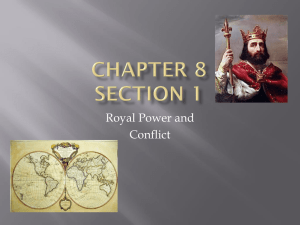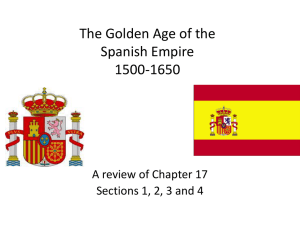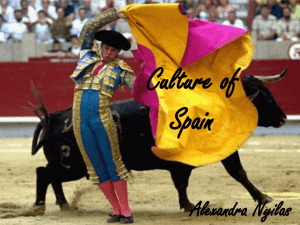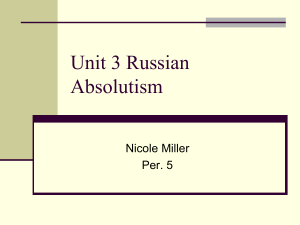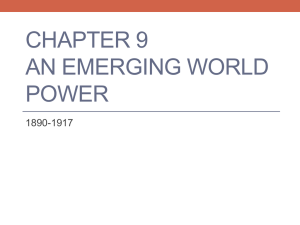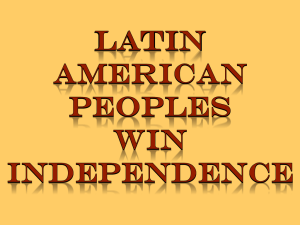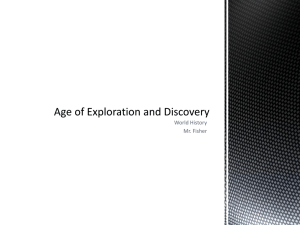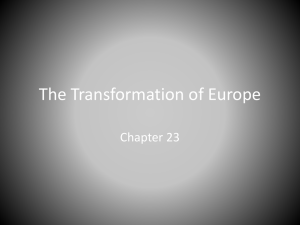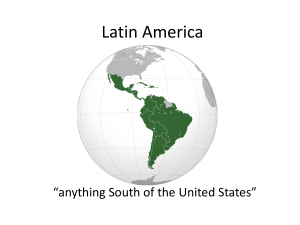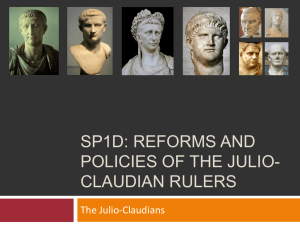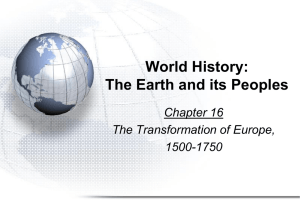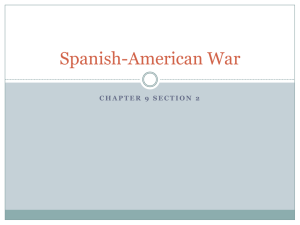Netherlands and War of Religion
advertisement
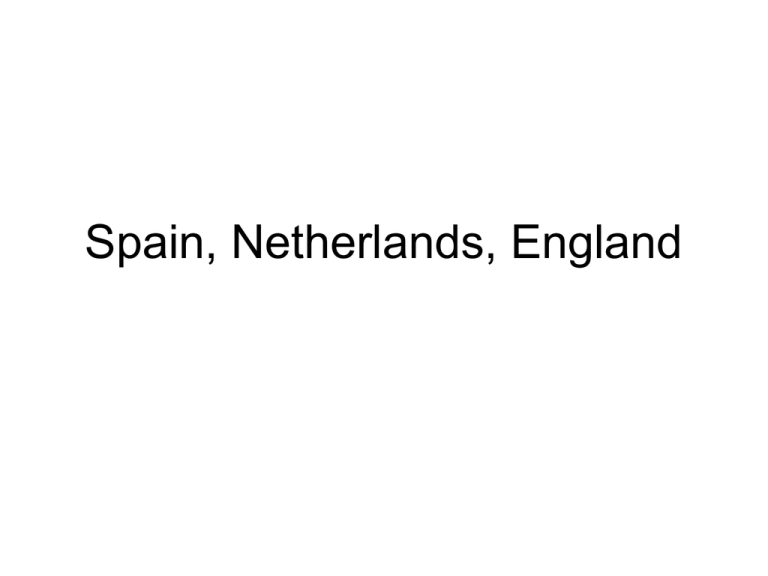
Spain, Netherlands, England • Philip II of Spain (1556-598) • Goals: consolidate & Secure lands he inherited from Charles V • Wanted strict uniformity in religion • Use of Spanish Inquisition • Strong monarchial authority • Monarchy became less dependent upon landed aristocracy • Became center of government: administered all departments, but could not delegate authority—became ineffective Philip’s Economy • Importation of gold/silver from New World • Agriculture, industry: textiles, silk, leather goods, commerce • BUT inflation from influx of money disrupted Spanish economy—hurt textiles and agriculture • Expense of wars after 1580 devastated economy • American gold/silver never more than 20% of royal revenue • Forced to impose crushing direct and indirect taxes on citizens • Gov’t still had to borrow • Philip repudiated his debts 7 times: yet 2/3 of state income went to interest payments on debt • Attempt to make Spain great power led to its decline • Catholicism to Spanish People most important aspect of Spanish heritage • Saw themselves as saviors of Catholic Christianity (from Protestant heretics) • Philip II “Most Catholic King” • 1571—Battle of Lepanto: Spanish, led by Philip II’s half-brother Don Jon, sent forth a holy league against Turks, led by Ali Pasha (Ottoman ruler) • Result of battle in Mediterranean: 1/3 Turkish fleet sunk • 30,000 Turks died • Portugal annexed in 1580 • But Spain less successful in Northern Europe, especially in regards to the Netherlands • Netherlands were pivot point of European diplomacy and war. • Movement to reform church became struggle for Dutch independence • Charles V (HRE) sees 17 provinces and Flanders as very important for trade w/in the empire • Antwerp: intersection of trade routes • International commerce and finance The Netherlands: The “Low Country” • • • • • • • • • • English: wool Portuguese: spices Baltic: wheat, fur, timber German states: iron Antwerp harbor could hold 2500 vessels All Dutch cities wealthy: Historical liberties Self-governing—own laws Collected own taxes Recognized Charles V as common ruler; he gave unity to provinces 17c Dutch Global Commerce • Netherlands held a States General: delegates from all provinces gathered, but decisions were made in the provinces themselves. • Religion in Netherlands: Same story: corruption in Catholic church; Spirit of Renaissance—reform movement Lutheran tracts spread; Dutch Bible flooded the provinces; 1520-1530’s: many become Protestant Charles V response: • Condemnation and mild repression of Protestants • Not effective policy, but worked for him b/c he was born in Ghent and raised in the Netherlands; this stopped the spread of Lutheranism; • Dutch were loyal to Charles V. • 1556—Charles V abdicates the HRE throne; splits his empire: Bro Ferdinand I gets Austria & Germany; son Philip II gets Spain, Netherlands, Milan, Sicily, New World The Spanish Hapsburgs & Europe (1556) Philip II consolidated Hapsburg lands at the end of the 16c. Revolt of the Netherlands 1566-1587 • Calvinism threat to Spain • By 1560’s: most cities had strong militant minority members: Large middle class— Calvinism appealed to them: – Intellectual seriousness – Moral gravity – Emphasis on any labor well done – Working class – Encouraged opposition to ‘illegal civil authority’ • Philip II aroused resentment when people of Netherlands realized that taxes they paid went to Spain to support Spanish interests • Philip II tried to crush Calvinism • 1566: violence erupted when Calvinist esp. nobles, began the destruction of statues, stained glass windows in Catholic churches • 1559: Margaret, Philip II’s half-sister, made regent of the Netherlands • *1559-1567: pushed Philip’s orders to wipe out Protestantism via the Inquisition • *Raised taxes to finance government despite opposition of the States General (Netherlands’ taxes higher than Spain’s) • This move unites repressed Calvinists w/those opposed to government fiscal policies • Repressive policies alienated many people; • Special tribunal: Council of Troubles, established a reign of terror in the north • Powerful aristocrats executed • Revolt became organized, especially In the northern provinces • William the Silent and Sea beggars met growing resistance 1566 • High grain prices • Popular preaching incite violent destruction aimed at: • Images of false doctrines, not people • Cathedral of Notre Dame—Antwerp 1st target • Preaching spread to Brussels, Ghent, Holland, Zeeland Philip II Reacts • Duke of Alva, accompanied by 20,000 troops sent from Madrid to pacify the Low Countries • Alva: Ruthless extermination of political and religious dissidents • Between Inquisition and Alva’s Council of Blood, 1500 men executed on March 3, 1568 • Margaret sickened by this and resigned the regency • Duke of Alva remained –Solved financial crisis: 10% sales tax on all transactions –1568-1578: Civil War between Catholics and Protestants in Low Countries and also between Low Countries and Spain –1576: 17 Provinces of the Netherlands united under Prince William of Orange (William the Silent) • Philip II sends his nephew, Alexander Farnese (Duke of Parma) to crush the revolt for good. • Farnese: –Superb sense of timing –Knowledge of lowland geography –Perfect plan –German mercenaries in army –Fought by sieges Result • All cities in South fall; finally Antwerp • Calvinism forbidden in South; Protestants convert or leave • Antwerp—most northern city under Spanish jurisdiction • Religious division of Netherlands • 10 southern provinces: controlled by Spanish Hapsburgs (future Belgium) Union of Arras—1579—Catholic union • 7 Northern provinces, led by Holland, form Union of Utrecht The Spanish Netherlands: Union of Utrecht, 1579 The United Provinces still recognized Spanish rule, but, in 1581, they declared their independence. • • • • • • • 1581: United Provinces of Netherlands Union of Utrecht declares independence from Spain to form United Provinces of Netherlands North and South very different: North South Defensible Ardennes mts. Interrupt canals & sluices flat terrain Broke dikes & Flooded countryside To halt Farnese North • Commercial aristocracy held power • Protestant South • Landed nobility held power • Catholic Geographical division not acceptable to Philip II or Farnese Struggle continued after 1581 United Provinces got help from Elizabeth I of England Holland’s Dikes Amsterdam’s Canals Patrician Houses Along the Canal in Leiden Holland: The “Dagger” The “Dagger” Pointing at the Heart of Britain! England 1558: Mary Tudor died/Elizabeth I becomes queen Intelligent, cautious, self-confident Moved to solve religious division in England (Mary had returned to Catholicism and killed protestants) Elizabeth: moderation and compromise 1559: Catholic legislation repealed New Act of Supremacy/Act of Uniformity revised to be more acceptable to Catholics • Catholics and Puritans continued to oppose Elizabeth’s settlement • Mary, queen of Scots, next in line to throne, challenged Elizabeth • Calvinists ousted her from Scotland in 1568; she fled for her life to England • Elizabeth placed her under house arrest for 14 years/tolerated her involvement in plots on Elizabeth’s life • Beheads her to end threat to Queen’s life • Foreign Policy: • Officially, Elizabeth knew that war would devastate England • Unofficially, she encouraged SEA Dogs: Drake and company, to raid Spanish ships and colonies • English piracy encouraged • If she failed to help the Dutch, Farnese would crush them and then try to invade England so she sends covert aid to French Huguenots and Dutch Calvinists trying to weaken those countries 3 things forced her hand • 1) English economy badly hurt (no wool exports) • 2) Murder of William the Silent (July 1584) (no military check on Farnese) • 3) Collapse of Antwerp: signal of Catholic sweep through the Netherlands—England next?!! • Result—Elizabeth sent 250,000 pounds and 2,000 troops to Protestant cause in Low Countries 1585-1587 • Philip II then encouraged to invade England Spanish Armada sent—was a disaster from the beginning: not enough ships, or troops English ships battered the fleet Ships sailed back to Spain by northward route around Scotland Battered by storms, and most of fleet destroyed. The Netherlands (1609)
